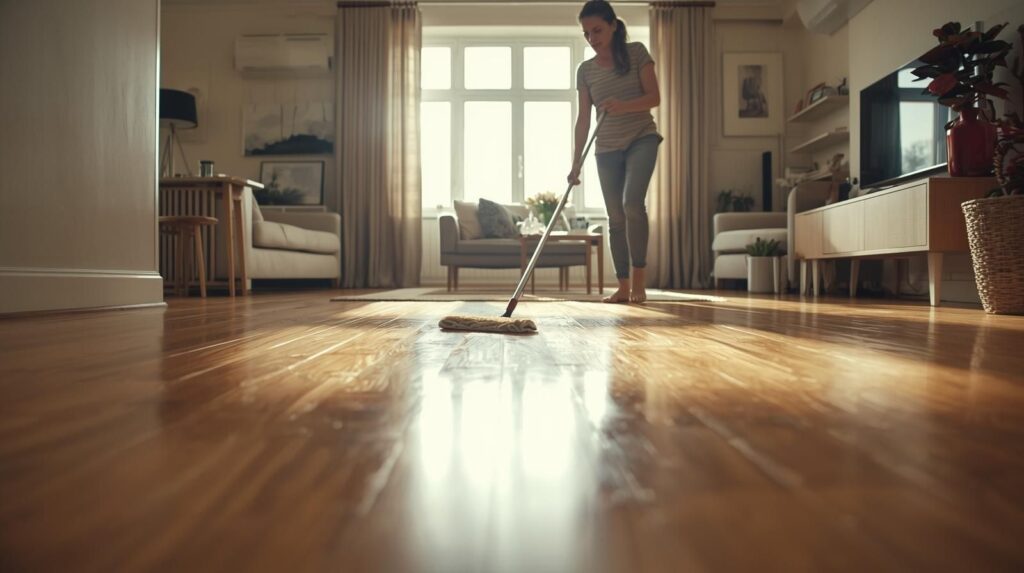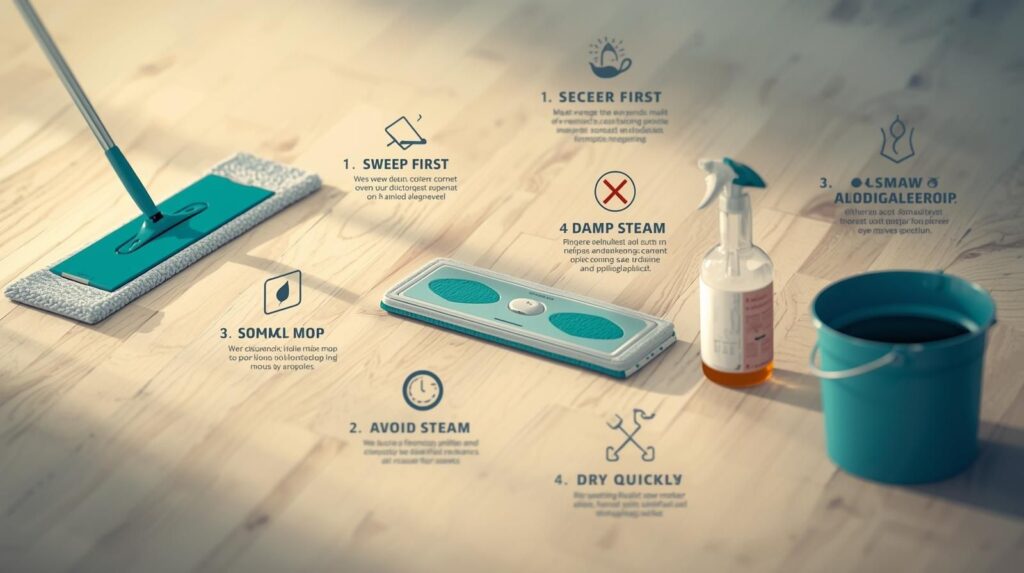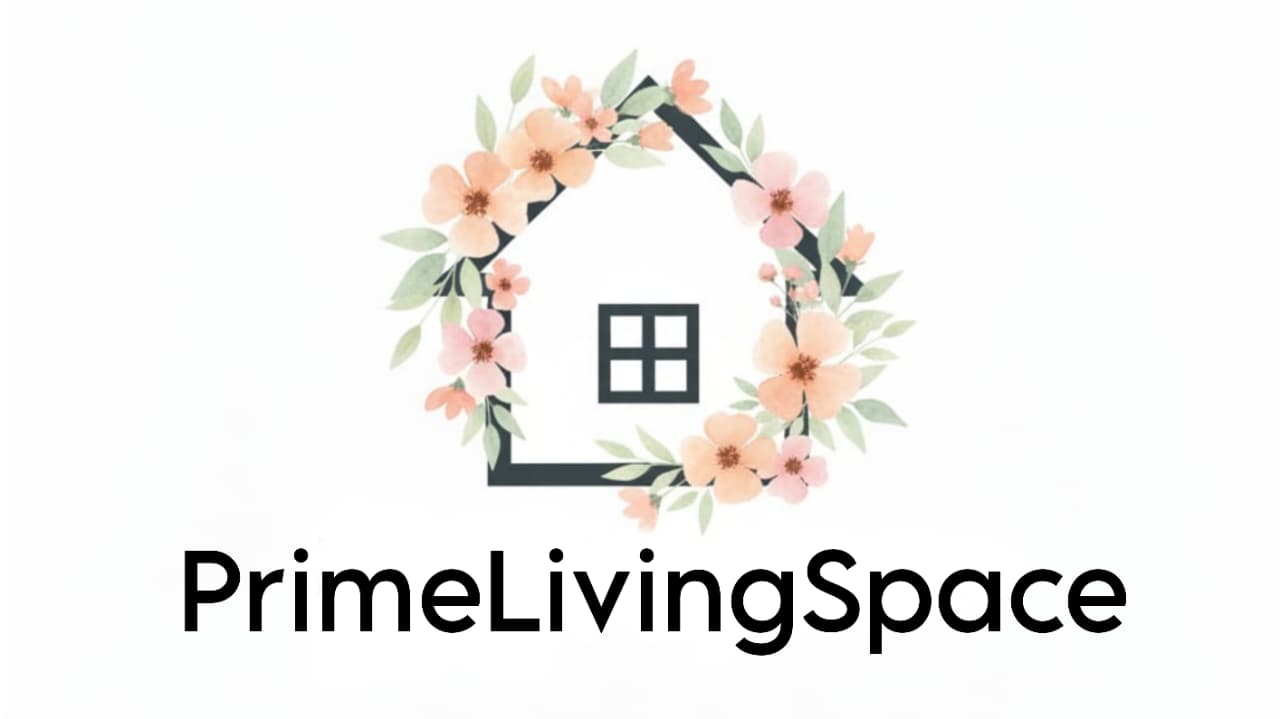In this guide, you’ll learn about the people search ” How Do You Wash Laminate Flooring ” — with step-by-step instructions, expert tips, and simple product suggestions that actually work.
If you love the sleek, modern look of laminate flooring, you’re not alone. It’s durable, affordable, and easy to maintain — but it also needs special care when it comes to cleaning. Laminate flooring may look like hardwood flooring, but it reacts very differently to moisture. The trick is knowing how to clean it without damaging the layers underneath.
Quick Answer: How Do You Wash Laminate Flooring

“Wring a microfiber mop until it’s slightly damp and clean with a pH-neutral laminate cleaner or a gentle vinegar solution. Work in small sections, avoid puddles, and dry immediately. Blot spills right away and never use a steam mop unless the manufacturer explicitly says it’s safe.”
- Why Laminate Needs Special Care
- Tools & Supplies You’ll Need
- Step-By-Step: How to Wash Laminate Flooring Safely
- Stain & Problem-Solving Guide (What to Do Now)
- Special Situations & FAQs
- Maintenance & Prevention Tips (Long-Term Care)
- Eco-Friendly & Safe Cleaning Options
- What Manufacturers Say: Check Your Warranty & Care Instructions
- Quick Reference: Printable Cleaning Checklist
- Final Thoughts & Summary
Why Laminate Needs Special Care
Laminate floors aren’t solid wood — they’re made from several layers pressed together.
- The top wear layer protects against scratches and stains.
- Beneath it sits a decorative layer (that pretty wood-grain print).
- The core is usually high-density fiberboard (HDF), which gives it strength but can swell if it absorbs too much water.
That’s why soaking or steam-cleaning laminate is a big no-no. Even a small puddle can seep into the seams and cause edges to lift or bubble — something you can’t easily fix later.
Different finishes — glossy, matte, or textured — may also need slightly different care. Glossy finishes show streaks more easily, while textured ones can trap dust. Knowing what type you have helps you choose the right cleaning method.
Read: Maple Hardwood Flooring vs Oak: Which One Truly Elevates Your Home?
Tools & Supplies You’ll Need
Here’s what you should have on hand before you start:
- Microfiber flat mop (wringable): gentle and streak-free.
- Soft bristle broom or vacuum (with hard-floor setting) to remove grit.
- pH-neutral laminate floor cleaner — trusted brands include Bona, Black Diamond, or Zep.
- Microfiber cloths for wiping and spot cleaning.
- Bucket or spray bottle with your cleaning mix.
- Optional: eraser sponge or non-abrasive pad for tough stains.
Avoid:
Steam mops, wax or polish, oil-based soaps, and cleaners with ammonia or bleach. These can dull or damage your laminate’s protective coating.
Step-By-Step: How to Wash Laminate Flooring Safely

1. Remove Loose Dirt & Debris (Daily or Weekly)
Start by sweeping or vacuuming to get rid of dust, pet hair, and grit. Tiny particles can scratch the surface over time, especially in high-traffic areas like hallways or kitchens.
2. Spot Clean Fresh Spills Immediately
Spills happen — just don’t let them sit.
Grab a microfiber cloth and blot (don’t rub) the liquid right away.
For sticky messes, dampen your cloth slightly with your cleaning solution and wipe gently. The faster you act, the better your floor will look.
3. Prepare Your Cleaning Solution
You’ve got two safe choices:
- Option A: Use a commercial pH-neutral laminate cleaner — simply follow the instructions on the label.
- Option B: Make a DIY cleaner by mixing 1 cup of distilled white vinegar with 1 gallon of warm water and a few drops of mild dish soap.
- Pros: Budget-friendly, effective on grease.
- Cons: Too much vinegar can dull the finish — moderation is key.
- Pros: Budget-friendly, effective on grease.
Always wring your mop until it’s just damp — not dripping.
4. Mopping Technique
Work in small sections, moving with the grain of the flooring.
Rinse your mop frequently and avoid pushing dirty water around.
Use what’s called the “paper towel test” — press a paper towel to the floor after mopping. If it’s dripping wet, your mop is too damp.
No puddles, no soaking — just a light sheen that dries quickly.
5. Drying & Final Touches
After mopping, go over the floor with a dry microfiber cloth or towel to absorb any leftover moisture.
Turn on a fan or open windows if needed — laminate loves quick drying.
If you use rugs or mats, make sure they’re breathable (avoid rubber backs that trap moisture).
6. Frequency Recommendations
Here’s a simple routine based on lifestyle:
- Light use (1–2 people): Sweep daily, damp mop once a week.
- Families with kids or pets: Sweep every other day, damp mop 1–2 times per week, spot clean daily.
- High-traffic areas: Deep clean once a month.
Consistency keeps your floor looking new for years.
Stain & Problem-Solving Guide (What to Do Now)
| Stain Type | How to Remove It | What to Use |
| Coffee / Tea | Blot quickly, clean with diluted vinegar mix | Mild vinegar solution |
| Ink / Marker | Dab with isopropyl alcohol (test first) | Cotton cloth + alcohol |
| Grease / Oil | Use warm water + a drop of dish soap | Microfiber cloth |
| Pet Urine | Blot, use enzyme cleaner, dry completely | Pet-safe enzyme cleaner |
| Water Rings / Swelling | Dry immediately, use fans | May need board replacement if persistent |
If your laminate starts bubbling or lifting, that’s your cue to call a professional or replace the damaged planks.
Read: What Are the Most Common Mistakes When Installing LVP Flooring
Special Situations & FAQs
Can You Steam Mop Laminate Flooring?
Generally, no — steam can force moisture into the seams and cause swelling.
Some “waterproof laminate” brands exist, but always check your manufacturer’s care guide before using steam.
Is Vinegar Safe for Laminate Floors?
Yes, in small doses. Vinegar cuts grease and kills bacteria, but overusing it can dull your floor’s shine. Always dilute it well and test a small corner first.
How to Handle Deep Scratches
For small scratches, try laminate repair kits or colored wax pencils that match your floor tone. If the damage is deep or the board has chipped edges, replacement is the only long-term fix.
Best Cleaners for Laminate Floors
Here are a few reliable choices:
- Bona Hard-Surface Floor Cleaner — gentle and streak-free.
- Black Diamond Laminate Cleaner — great for pet households.
- Eco-Option: Vinegar + distilled water DIY mix (budget-friendly).
Can You Use Swiffer or Disposable Wipes?
Dry Swiffer cloths are fine for dusting, but avoid wet Swiffer pads — they can leave residue or moisture streaks. A reusable microfiber mop is a better long-term choice.
Maintenance & Prevention Tips (Long-Term Care)
- Place rugs or mats near doors and sinks.
- Add felt pads under furniture legs.
- Trim pet nails to reduce scratching.
- Keep humidity between 35–55% to avoid expansion or gaps.
- Never use rubber-backed mats that trap moisture underneath.
These little habits add years to your laminate’s life.
Eco-Friendly & Safe Cleaning Options
If you prefer natural cleaning, use plant-based or enzyme cleaners.
DIY mix: warm water + a few drops of Castile soap + essential oil for scent.
Switch to reusable microfiber pads instead of single-use wipes — it’s better for the planet and your wallet.
Pet owners should stick with fragrance-free, non-toxic formulas.
You may also like this one : DIY Subfloor Diagnostics with the help of AI
What Manufacturers Say: Check Your Warranty & Care Instructions
Before using any new product, look up your floor’s brand and model online. Most laminate brands (like Pergo, Shaw, or Quick-Step) post their cleaning and care recommendations.
Following these matters — using the wrong cleaner can void your warranty.
If you’re unsure whether your laminate is waterproof, check your packaging or manufacturer’s website for details like the AC rating and care guide.
Quick Reference: Printable Cleaning Checklist
Here’s a simple routine you can print or save:
Daily: Sweep or vacuum.
Weekly: Damp mop lightly.
Monthly: Deep clean, check seams and mats.
As Needed: Spot clean spills immediately.
Final Thoughts & Summary
Laminate flooring is one of those home upgrades that beautifully balances style, comfort, and practicality — but it does ask for a little extra care. The secret to keeping it looking fresh for years isn’t complicated; it’s all about being gentle and consistent.
Always remember — laminate doesn’t love water. A quick sweep each day and a light pass with a slightly damp microfiber mop once or twice a week can make a huge difference. If you spot a spill, wipe it up immediately before it seeps into the seams. A few seconds of attention now can save you from costly repairs later.
When cleaning, think less is more. Avoid soaking the floor or using harsh products like ammonia, bleach, or steam. Instead, go for pH-neutral cleaners or mild DIY mixes that lift dirt without damaging the protective surface. Your goal isn’t to “wash” the floor — it’s to refresh it safely.
Also, don’t underestimate the power of prevention. Felt pads under furniture legs, breathable rugs near entryways, and regular humidity checks can protect your laminate from scratches and swelling. These small habits are the real long-term heroes of floor care.
In the end, laminate flooring doesn’t just make your home look polished — it sets the tone for comfort and warmth. With mindful cleaning and a bit of consistency, your floors will continue to shine under every step, spill, and moment life brings into your home.



